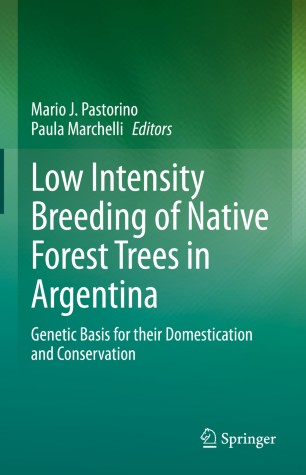Ver ítem
- xmlui.general.dspace_homeCentros Regionales y EEAsCentro Regional Patagonia NorteEEA BarilochePartes de librosxmlui.ArtifactBrowser.ItemViewer.trail
- Inicio
- Centros Regionales y EEAs
- Centro Regional Patagonia Norte
- EEA Bariloche
- Partes de libros
- Ver ítem
Nothofagus pumilio and N. antarctica: The Most Widely Distributed and Cold-Tolerant Southern Beeches in Patagonia
Resumen
Nothofagus pumilio (Poepp. & Endl.) Krasser, known as lenga, and Nothofagus antarctica (G. Forster) Oerster, commonly called ñire, are tree species of the temperate forests of southern South America, occurring in temperate-rainy forest districts, in the subalpine transition area, and in poorly drained sites (Veblen et al. 1996). Their natural distributions in Chile and Argentina mainly correspond to the Cordillera de los Andes, from 36° S to the south of
[ver mas...]
Nothofagus pumilio (Poepp. & Endl.) Krasser, known as lenga, and Nothofagus antarctica (G. Forster) Oerster, commonly called ñire, are tree species of the temperate forests of southern South America, occurring in temperate-rainy forest districts, in the subalpine transition area, and in poorly drained sites (Veblen et al. 1996). Their natural distributions in Chile and Argentina mainly correspond to the Cordillera de los Andes, from 36° S to the south of Tierra del Fuego archipelago (55° S). In Chile, N. pumilio also inhabits the Coastal Range (Cordillera de Nahuelbuta) where it grows associated with Araucaria araucana forests above 1400 m asl. In turn, N. antarctica is distributed in the Central Depression of Chile, from Valdivia toward austral latitudes. Throughout their entire distribution in
Argentina, lenga and ñire forests co-occur and overlap to a greater or lesser extent. This shared geographical distribution covers approximately 18° of latitude (2200 km of extension) and is the widest among the South American Nothofagus. Recently, the national forest inventory of Argentina (CIEFAP and MAyDS 2016) revealed a total of 1,595,661 ha and 864,148 ha of lenga and ñire forests, respectively. The National Park Administration of Argentina protects a portion of all this forest surface (34% and 15%, respectively), belonging the rest to provincial jurisdictions.
[Cerrar]

Fuente
Low Intensity Breeding of Native Forest Trees in Argentina : Genetic Basis for their Domestication and Conservation / Mario J. Pastorino; Paula Marchelli (Editores). Cham-Suiza, 2021. p. 117-148
Fecha
2021
Editorial
Springer
ISBN
978-3-030-56461-2
Formato
pdf
Tipo de documento
parte de libro
Palabras Claves
Derechos de acceso
Restringido
 Excepto donde se diga explicitamente, este item se publica bajo la siguiente descripción: Creative Commons Attribution-NonCommercial-ShareAlike 2.5 Unported (CC BY-NC-SA 2.5)
Excepto donde se diga explicitamente, este item se publica bajo la siguiente descripción: Creative Commons Attribution-NonCommercial-ShareAlike 2.5 Unported (CC BY-NC-SA 2.5)

